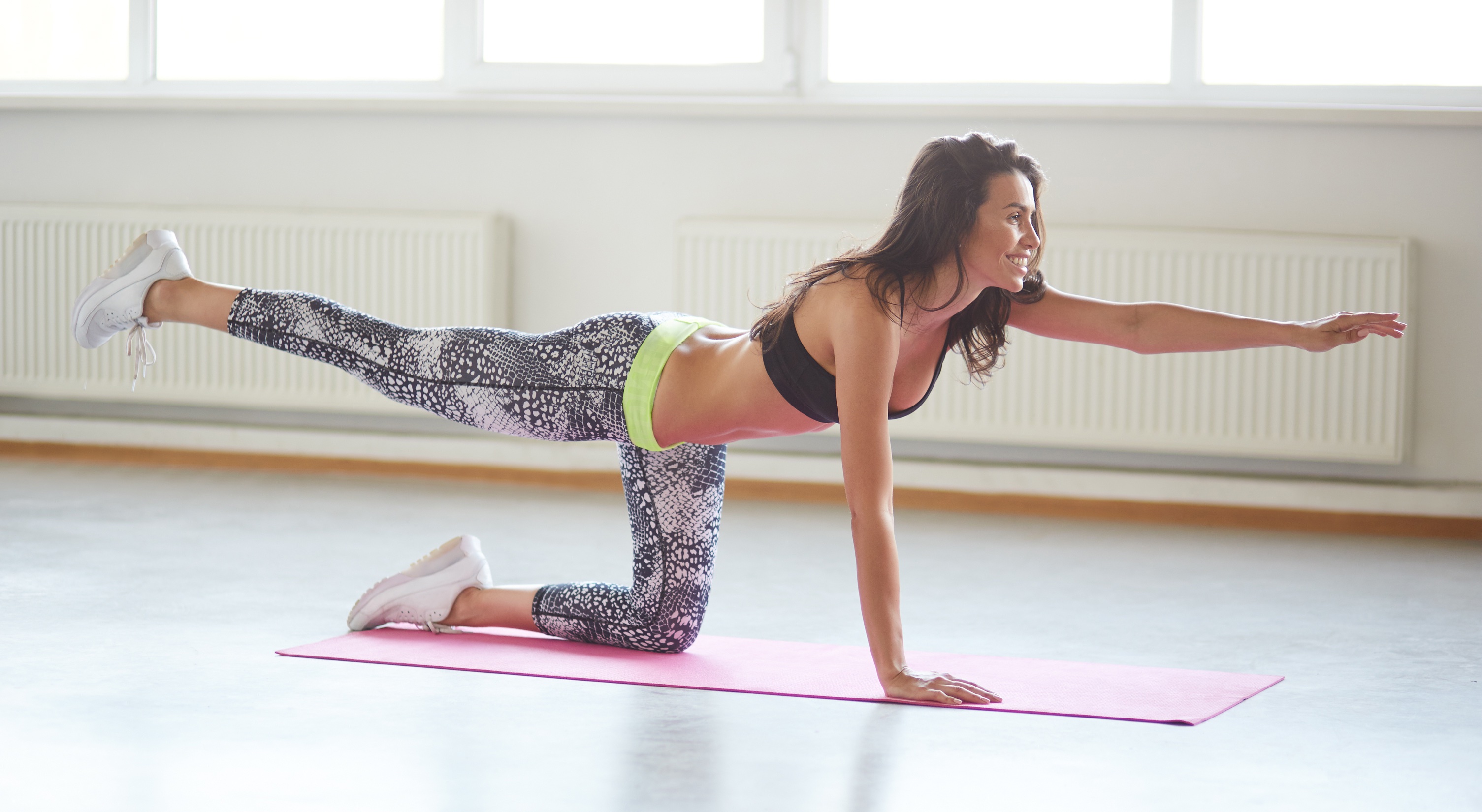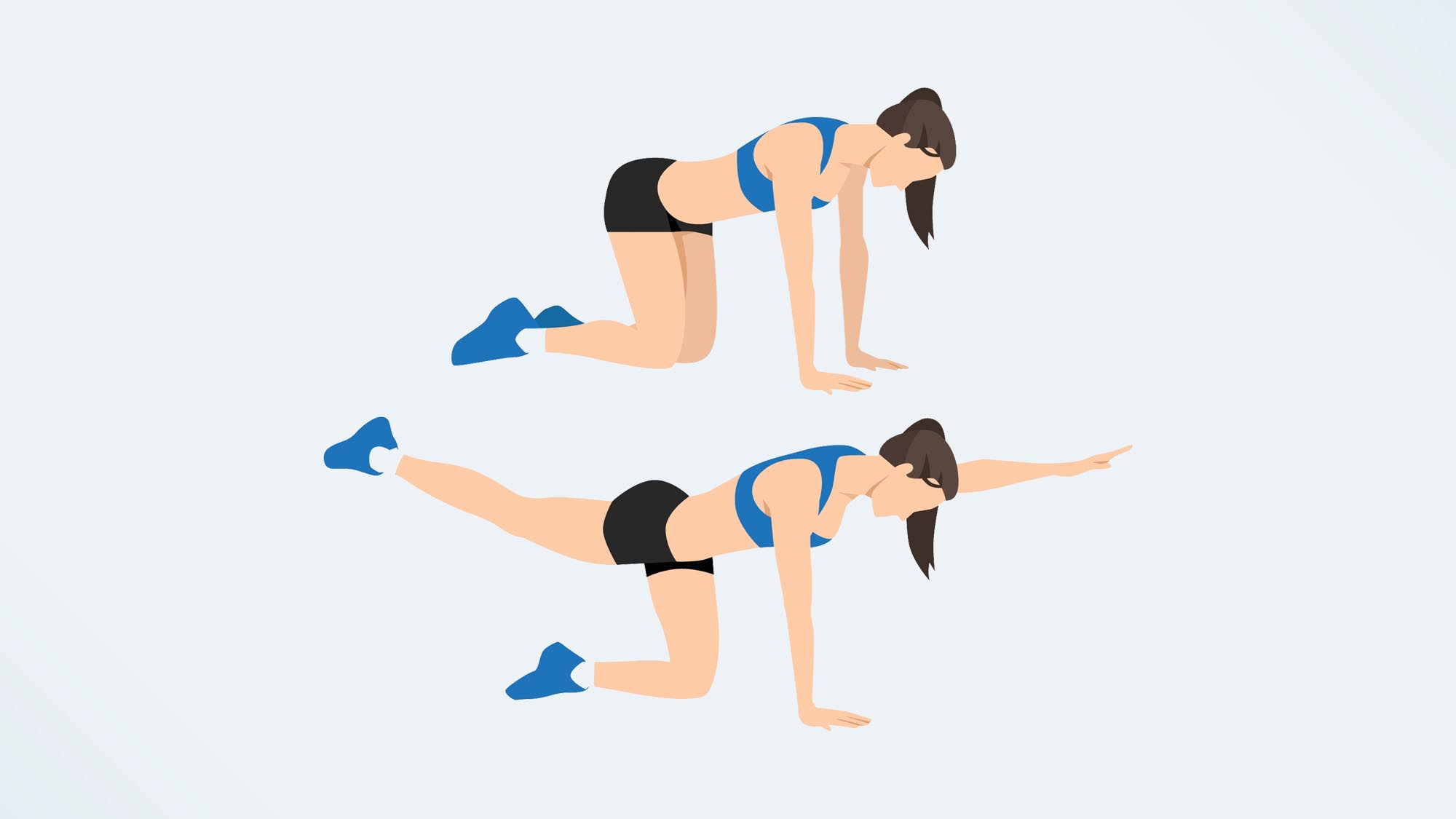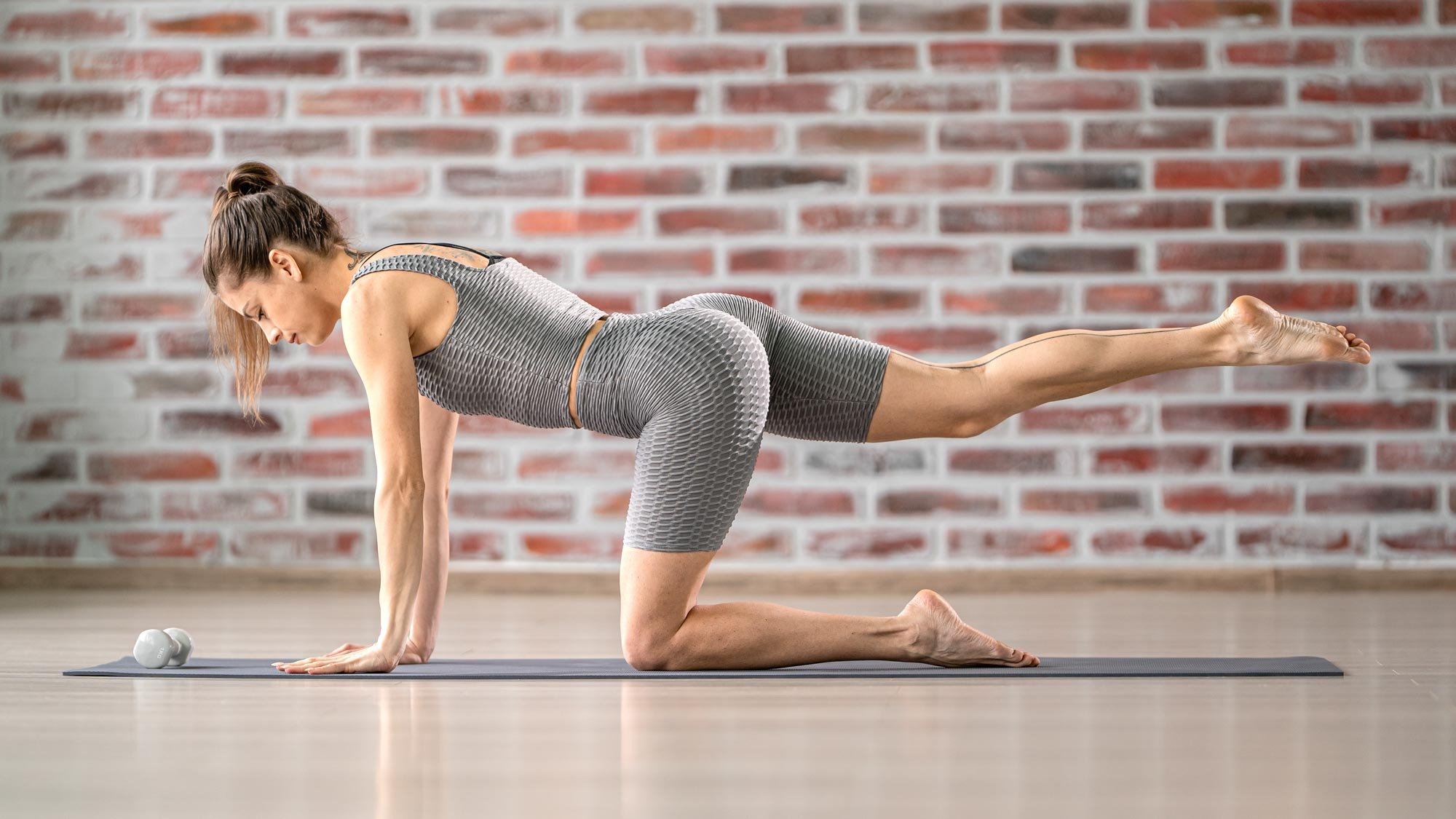
Pilates instructor Rebecca Dadoun shares her three favorite Pilates exercises for building back strength and improving posture. We recommend one of the best yoga mats and you can add a pillow or block if you want.
Low-impact back-strengthening exercises are the holy grail. They’re accessible to most people and can help prevent injuries by targeting the muscles responsible for posture, spine stabilization and safe, functional movement.
Below, we cover the three Pilates exercises in more detail, plus three common mistakes Dadoun sees cropping up, and how to fix them.
What are the three Pilates back exercises?
If you want to stretch, strengthen and lengthen the muscles surrounding your hips and spine — here’s how.
1. Dart
The Pilates dart exercise is a bodyweight back extension that targets and strengthens the posterior chain muscles, including your upper and lower back, and helps you switch on your glutes and shoulders.
“It’s anti-aging for your spine,” says Dadoun. “You are lying face down on the floor … and moving your head, neck and upper back away from the floor.” The goal is to counteract the modern-day lifestyle, like sitting hunched over desks and phones.
- Lie on your stomach with your arms by your sides, forehead on the floor and legs extended
- Reach your fingertips toward your toes and draw your shoulder blades together
- Lift your chest, head and upper back away from the ground and squeeze your glutes and back muscles
- Press through your feet and legs
- Pause, exhale and return to the starting position.
2. Side-lying arm opener
According to Dadoun, this is “for the ultimate feel-good move.”
“You lie on your side for this one with your arms outstretched, then open up and reach behind you,” she explains. “Again, as we spend so much of our days rounded forward this move will literally unravel your spine.”
The exercise uses a gentle spinal twist known as thoracic rotation and opens the chest, upper back and shoulders, helping you stretch your back and sides.
- Start on your right side with your arms outstretched in front of you, palms pressed together and knees bent
- Stack your hips, knees and ankles on top of each other
- Raise your left arm and reach behind you as far as you can
- Keep both shoulders pressed into the mat. Allow your gaze to follow your left hand
- Hold, then return to the starting position and switch sides.
If you find it difficult to keep both legs pressed together on the mat, place a cushion in front of your knees and position your top knee on to the cushion for extra support.
3. Tabletop arm and leg raise (Bird Dog)

This move, also known as Bird Dog, encourages “full-body integration,” meaning you’ll build balance and coordination between your upper and lower body.
“This one move can work the entire body,” says Dadoun. “By being on all fours and lifting your opposite arm and leg off the floor, your shoulders are switched on, your abs are pulling up to stop your back from arching, your glutes are working, and your shoulders are mobilizing.”
Other active muscles include the erector spinae, hamstrings, trapezius and deltoids. Dadoun also encourages you to play with different arm and leg variations so that you can layer with versatility. You could even try the move from a plank position (below) to progress Bird Dog further.
- Start in a tabletop position — wrists under your shoulders and knees under your hips
- Engage your core, then extend your left arm forward to shoulder height and your right leg backward to hip height
- Maintain a flat back and look to the top of your mat
- Pause, then return to the starting position.
- Switch sides.
3 common Pilates mistakes — and how to fix them

“While there are lots of potential mistakes I see people make, most can be linked to three things: form, breathing, and core engagement,” Dadoun says.
- Core engagement
“Many people struggle with properly engaging their core often due to misunderstanding what the core actually is,” explains Dadoun. “Most people think that the core is only the abdominal muscles…in reality, it's a system of muscles working together.”
Dadoun advises thinking of your core as a cylinder — abs at the front, spinal muscles along the back, pelvic floor at the bottom and diaphragm at the top — to keep it simple.
“Developing a strong core requires engaging all these components, not just the abs, and certainly not through crunches alone!” Although people use the terms interchangeably, there are some differences between abs and core muscles, so it pays to exercise in a way that strengthens both.
- Breathing
“Correct breathing is crucial in Pilates and frequently overlooked,” says Dadoun. “Proper technique involves lateral breathing and engaging your abdominals with each exhale. A helpful cue is to imagine drawing your navel toward your spine while simultaneously sending your lowest rib toward your pelvis.”
Breath is key to your core engagement, safe movement and maintaining control — you’ll also find mindfulness benefits. If this sounds like your thing, we recommend these three breathing exercises for beginners.
- Form and stability
“Understanding which body parts should stay still and which should be moving is essential for proper form. Most Pilates exercises are performed with a neutral pelvis.” This means stabilizing certain areas while moving others.
“For instance, in a four-point kneeling position lifting your leg in tabletop, your torso and spine should remain still while only your hip joint moves.”
Dadoun explains that unnecessary movement like arching the back into a "banana shape" during leg lifts, bending the elbows in tabletop, or tipping your head back are all common examples.
“Once you understand your form, core engagement and breathing, most of the mistakes are fixed!”
More from Tom's Guide
- A Pilates instructor says these 6 exercises strengthen your abs without weights, so I tried them
- A Pilates instructor shares a 20-minute Pilates workout for developing healthy hips and strengthening your lower body
- I did 70 decline push-ups every day for a week — here’s what happened to my upper body







